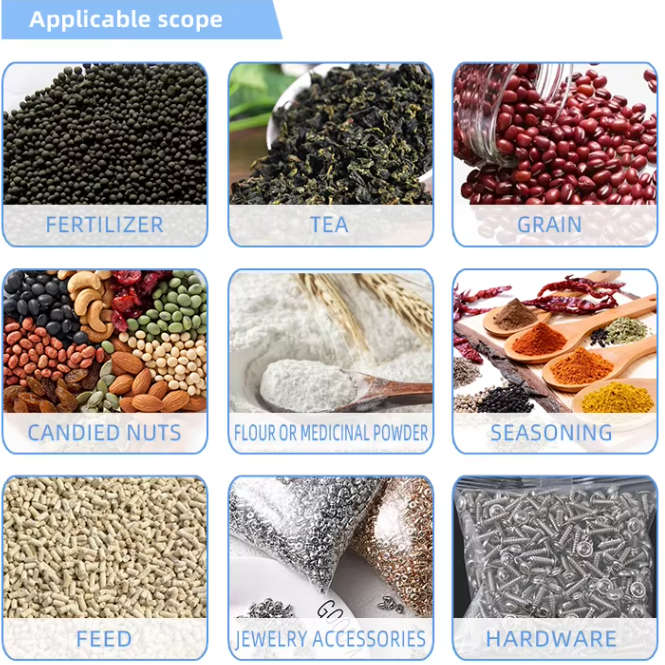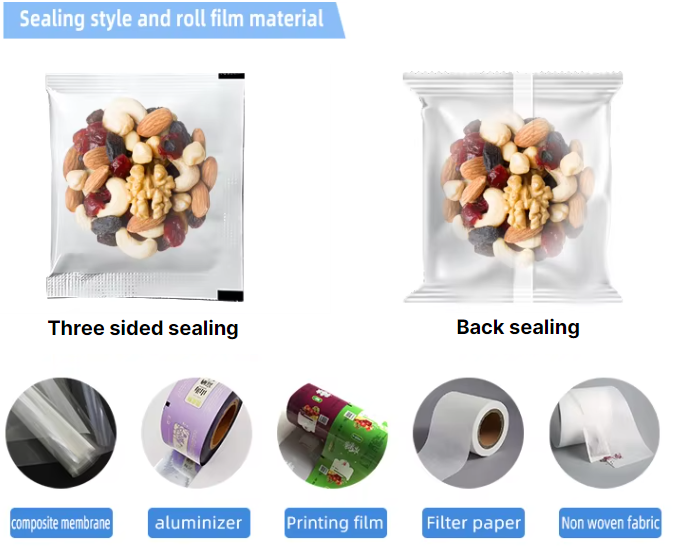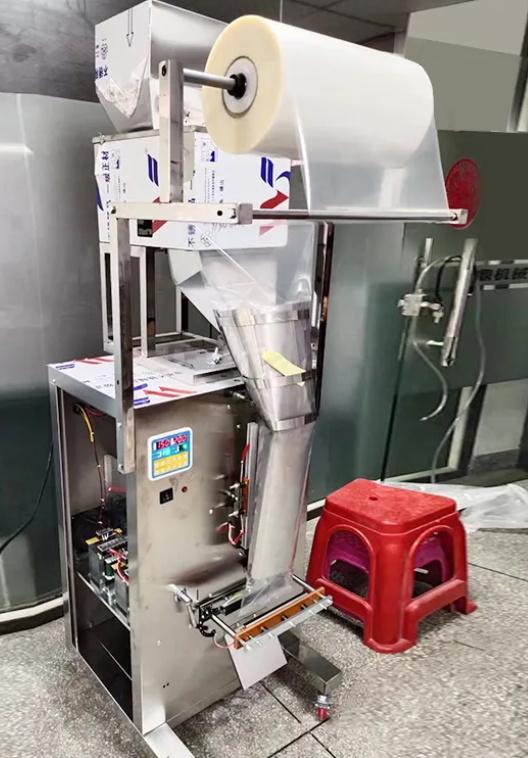An automatic packaging machine is a system designed to package products efficiently and effectively with minimal human intervention. These machines are widely used in various industries, including food and beverage, pharmaceuticals, cosmetics, and electronics.
Application:
The application scope of packaging machines: meat, aquatic products, agricultural products, fast food, prepared food, powder, spices, electronics, hardware parts, medicine and other industries. From this point of view, fully automatic packaging machines are widely used in food, chemical and other industries, and their importance is also very important.
Automatic packaging machine is a general term for machines used in product production and outsourcing. It is mainly divided into two aspects:
1. Assembly line overall production packaging, used for filling (filling), sealing machine, and coding of (bagged, bottled) products in food, medicine, chemical and other industries.
Mainly includes: liquid (paste) filling machine, pillow packaging machine, powder granule packaging machine, etc.
2. Product peripheral packaging equipment, used for spraying (printing) production date, sealing, shrinking film, etc. after the product is produced
Mainly includes: filling machine, sealing machine, inkjet printer, packaging machine, vacuum machine, shrinking machine, vacuum packaging machine, etc.
3. Characteristics of packaging machines
a. Packaging machines are widely used: currently in the market: food, chemical, pharmaceutical, and light industries are all using them (relatively less in the machinery industry).
b. Easy to use (complete multiple processes at one time: bag pulling, bag making, filling, coding, counting, metering, sealing, product delivery, can be automated, and unmanned after setting.)
c. High efficiency: The output of packaging machines in the Chinese market can be close to 120-240 bags per minute
d. Clean, hygienic and energy-saving. Using packaging machines is clean and hygienic. No manual work is required. It is possible to use clean, hygienic, material-saving, bag-saving, cost-saving and environmentally friendly functions.
4. Principle of packaging machine: The vacuum packaging machine puts the vacuum nozzle into the packaging bag of the packaged object, evacuates the air, exits the vacuum nozzle, and then completes the sealing.
5. Composition of packaging machine: vacuum pump, motor, vacuum chamber, sealing strip, plexiglass plate cover, air bag, solenoid valve, etc.


Type:
1.Vertical Form Fill Seal (VFFS): Used for packaging products in bags, particularly powders and granules.
2.Horizontal Form Fill Seal (HFFS): Ideal for packaging products in flexible pouches and bags, often used for snacks and liquids.
3.Cartoning Machines: Pack products into cartons, suitable for various items, including food and consumer goods.
4.Blister Packaging Machines: Used for packaging tablets, capsules, or small consumer products in plastic blisters.
5.Shrink Wrapping Machines: Wrap products in plastic film that shrinks when heated, providing protection and tamper evidence.
Advantages:
1. Speed up production
The biggest advantage of automated packaging systems is that they can significantly increase production speed. In packaging processes with high levels of human involvement, machines cannot run at full speed, whereas in automated packaging systems, production speed and overall efficiency are increased, and yields are better.
2. Eliminate downtime
In the manual production process, necessary downtime will bring production losses, but the automated packaging system can run uninterrupted, eliminating the reduction in production capacity caused by downtime.
3. Reduce production risks
In automated packaging systems, the risk of product failure is significantly reduced, which, coupled with improved production capacity, can bring better production capacity and profits to the company.
4. Improve economic efficiency
Automated equipment reduces reliance on manual labor, which reduces operating costs for companies. In addition, the automated packaging system improves accuracy and optimizes the production process, thereby reducing resource waste during the production process and improving the economic benefits of the enterprise.



